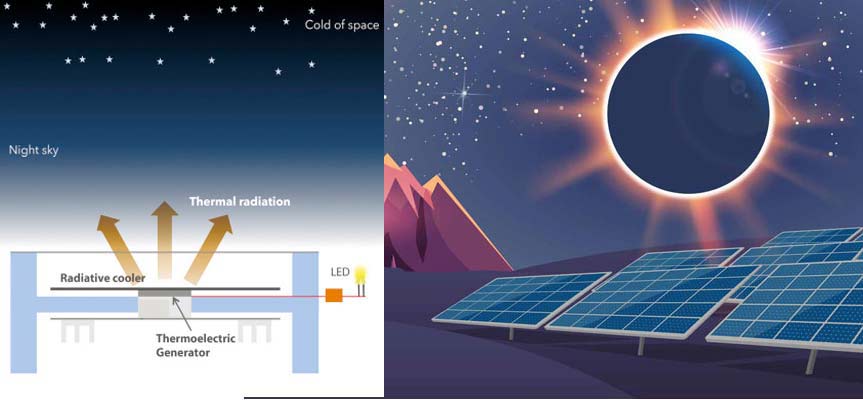Night Sky Solar Panels, under development
A new breakthrough in clean energy, however, could change everything. A new “anti-solar panel” could be able to bridge the gap left by solar energy, collecting energy from the night sky. The thermoelectric generator-based device, developed by a team of researchers at Stanford University in Palo Alto, California, harnesses the variance in temperature between Earth and outer space, by using “a passive cooling mechanism known as radiative sky cooling to maintain the cold side of a thermoelectric generator several degrees below ambient” according to the researchers study, published in the scientific journal Joule.
The study, titled “Generating Light from Darkness” goes on to explain the energy-producing process in further detail: “We use a passive cooling mechanism known as radiative sky cooling to maintain the cold side of a thermoelectric generator several degrees below ambient. The surrounding air heats the warm side of the thermoelectric generator, with the ensuing temperature difference converted into usable electricity. We highlight pathways to improving performance from a demonstrated 25 mW/m2 to 0.5 W/m2. Finally, we demonstrate that even with the low-cost implementation demonstration here, enough power is produced to light a LED: generating light from darkness.”
So far, the groundbreaking device has only been tested at a very small scale. A 20-centimeter prototype was tested by Stanford last winter, and the small test successfully created enough energy to power a single small LED lightbulb–a small success with immeasurably massive potential. As ScienceNews reports, “A bigger version of this nighttime generator could someday light rooms, charge phones or power other electronics in remote or low-resource areas that lack electricity at night when solar panels don’t work.”
The technology is still under development, and the researchers have already planned improvements including enhanced insulation around the top plate that could potentially raise the device’s energy production to 0.5 watts per square meter or more, but the potential outcomes are boundless. If this technology could eventually be refined to produce anywhere close to as much energy as a standard solar panel, it would completely transform the renewable energy sector, making it a far greater contender to take the place of fossil fuels.
Highlights
- •
A thermoelectric generator is built whose cold side radiates heat to the sky
- •
Night-time power generation of 25 mW/m 2 is demonstrated, sufficient for a LED
- •
Pathways to performance > 0.5 W/m 2 using existing commodity components exist
- •
This approach is immediately practical for lighting and off-grid sensors
Summary
Graphical Abstract
